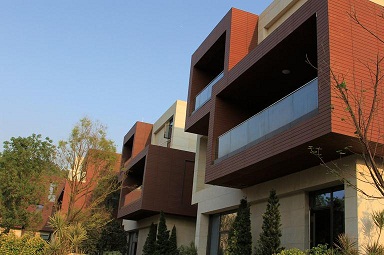Common Damaging Factors About Terracotta Surfaces
Human beings has been deriving the benefits of using terracotta for various applications in a long time, and now many architects and designers have successfully exploited the helpful characteristics of terracotta, like a smooth surface and the richness of earthy shades, to their benefit. Besides the inbuilt tonal variations provided by the items made using fire clay, the present producers have been able to add color to make these items more attractive for decorative applications by giving them an appropriate surface treatment. The use of glazing and different kinds of clays has facilitated the development of workable exterior designs. The types of terracotta used now include slip or engobe, or encaustic. Though discovered during early times, such techniques gained popularity as external architectural applications during the 19th to the beginning of 20th centuries.
There was a corresponding development in the design and use of ceramics as building materials With developments in the structural applications of cast iron plus steel. The creation of novel mounting materials led to the development of plastics and other colorful materials, which were unknown. As it didn’t involve using bricks or stone, architects started using terracotta as cladding material and for sculpturing of porticos and penalized roofing systems.
Initially, the failure of creative installations was attributed to erroneous designs and constructional details. That should not surprise us, knowing that it was a technically challenging use. The Terra Cotta Society made available considerably different standards for installation from 1914 to 1927, after realizing that early recommendations failed to effectively justify the structural support, the expansion and the water relocation. The lack of maintenance or the wrong practices prevalent in the harsh and varying climatic conditions of North America often added to the increased failures.
The causes of structural failures included the penetration of water, the stress caused by the contraction/expansion, the complexities of firing during production and the differences in the performance of glazing and clay elements. The main failures, amounting to structural unsteadiness, need to be tackled by repairing, stabilizing or replacing the detached or damaged units. Testing and analysis needs to be undertaken to understand the causes, as well as finding solutions for the deterioration. Wherever it is possible to provide a suitable anchoring, expansion and waterproofing, the damaged original units could be preserved, either on site or after removal.
Studies conducted by Conservation Solutions, Inc., on the widespread surface failures of the terracotta parts on the façade of the Holy Redeemer College in Washington, DC, proved that the quality of manufacturing was poor. Here, again, terracotta parts were incorporated in a stone structure for the most part. Window surrounds, battlements, string courses, towers, parapet cresting and other parts of the façade were made using a buff-colored terracotta placed within the medium-gray granite ashlar.
Sizeable losses, surface deterioration and fractures were observed in the terracotta panels all through the inspection of the building facade. Although some losses were related to problems typically associated with masonry structures such as open joints, insufficient maintenance, using caulk to conceal poor original waterproofing etc., lot of the surface weakening could be connected to bad manufacturing techniques.
If you are looking to give a new look to your building, why not try the new LOPO terracotta facade panel or the LOPO terracotta louver? Visit our website for more details!




